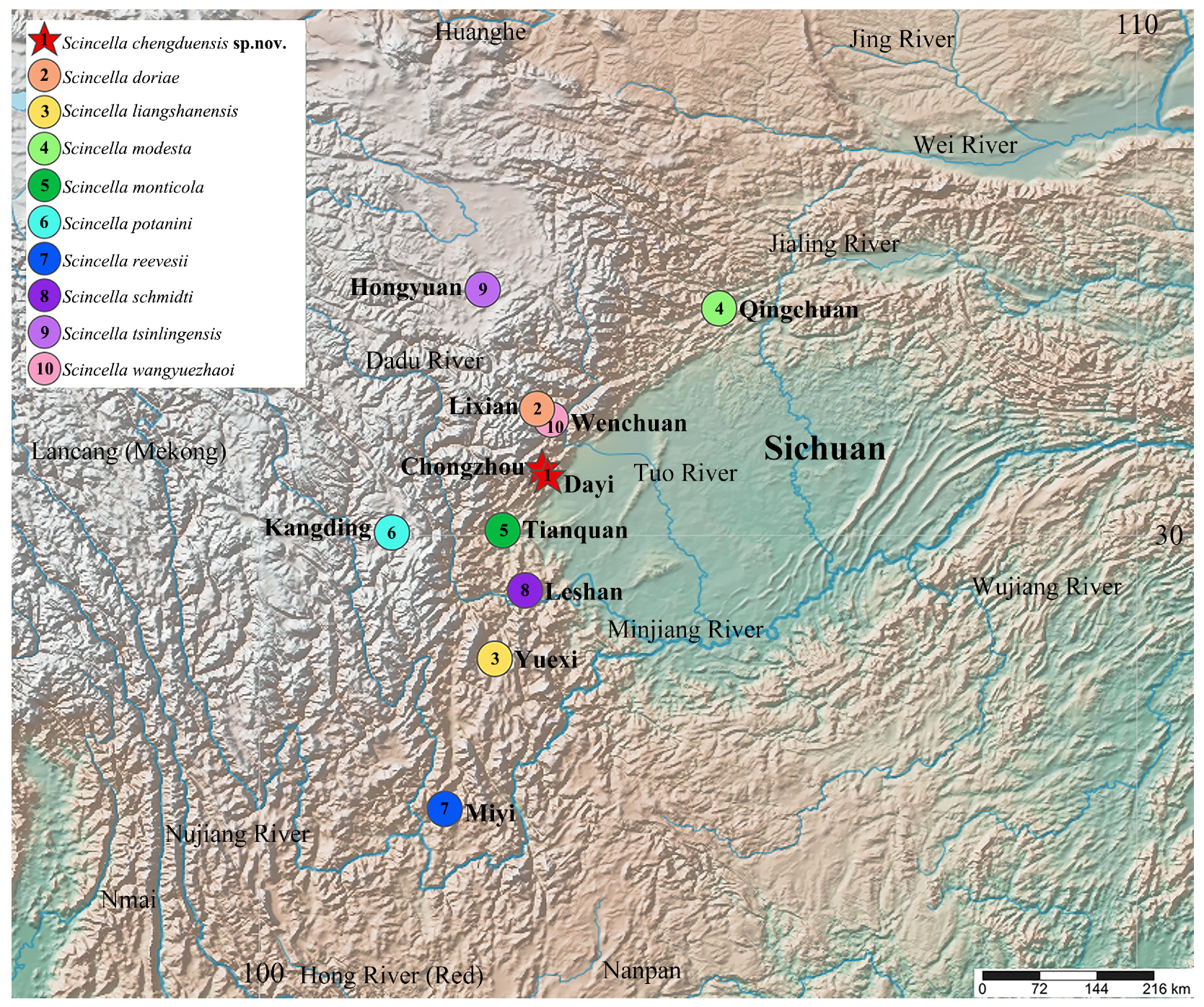2025-03-07 中国科学院 (CAS)
新種のトカゲは中型で、吻端から肛門までの長さは28.4~43.2mm。腹部には密集した斑点があり、背面には不規則な灰褐色の縞模様が特徴だ。この発見は国際学術誌『Animals』に発表された。
標高5,000メートル以上の地形を持つ成都は、生態系が良好に保たれており、両生類と爬虫類の自然生息種が75種記録されている。これは中国の大都市の中でもトップクラスの生物多様性を誇る。
<関連情報>
- https://english.cas.cn/newsroom/cas_media/202503/t20250307_903279.shtml
- https://www.mdpi.com/2076-2615/15/2/232
都市の隠れた生物多様性: 中国南西部、四川省成都市産Scincella Mittleman, 1950 属(Squamata: Scincidae)の新種 Hidden Urban Biodiversity: A New Species of the Genus Scincella Mittleman, 1950 (Squamata: Scincidae) from Chengdu, Sichuan Province, Southwest China
Ru-Wan Jia,,Zong-Yuan Gao,,Di-Hao Wu,Guan-Qi Wang,Gang Liu,Min Liu,Ke Jiang,De-Chun Jiang,Jin-Long Ren, andJia-Tang Li
Animals Published: 16 January 2025
DOI:https://doi.org/10.3390/ani15020232

Simple Summary
Urban biodiversity is often underestimated, yet new discoveries continue to reveal previously unrecognized species within these environments. This study describes a new species of the genus Scincella, Scincella chengduensis sp. nov., from the urban and suburban landscapes of Chengdu, Sichuan Province, China. Integrating detailed morphological comparisons and genetic analyses, this species was determined to be distinct from all known skinks in the region. This discovery underscores the role of Chengdu as a biodiversity reservoir, even amidst rapid urbanization. Furthermore, this study highlights the resilience of species in fragmented and human-altered habitats, emphasizing the importance of urban environments for biodiversity research. The discovery of Scincella chengduensis sp. nov. expands the known diversity of skinks and stresses the urgent need for targeted conservation efforts in urban areas. These findings provide valuable insights for managing urban biodiversity and guiding conservation strategies in cities undergoing rapid development.
Abstract
The genus Scincella Mittleman, 1950, belonging to the family Scincidae, exhibits considerable morphological convergence, complicating species delimitation and resulting in underestimated diversity. Currently, 41 species are formally recognized in this genus, although this figure likely underestimates its true richness. In this study, a new species of the genus Scincella, Scincella chengduensis sp. nov., is described from urban and suburban areas of Chengdu, Sichuan Province, Southwest China. Morphological features and phylogenetic analyses confirmed that the new species is distinct from all previously recognized congeners. The new species can be clearly distinguished by a combination of the following unique characters: (1) slender, medium-sized body, snout-vent length 28.4–43.2 mm; (2) infralabials seven, rarely six; (3) supraciliaries six or seven; (4) tympanum deeply recessed without lobules, tympanum diameters equal to or exceeding palpebral disc diameters; (5) midbody scale-row counts 23; (6) dorsal scales smooth, slightly enlarged, paravertebral scale-row counts 57–60, ventral scale-row counts 42–44, gulars 21–22; (7) upper edge of lateral longitudinal stripes relatively straight, four rows of dorsal scales in middle; (8) enlarged, undivided lamellae beneath finger IV 8–9, enlarged, undivided lamellae beneath toe IV 10–12; (9) ventral surface densely covered with dark spots; (10) grayish-brown, irregular dorsal stripes 2–3, black dorsolateral stripes from posterior corner of eye to lateral side of tail. This discovery underscores the underestimated diversity of Scincella in China and highlights the importance of urban habitats as reservoirs of hidden biodiversity. A diagnostic key to the Scincella species of China is also provided.


